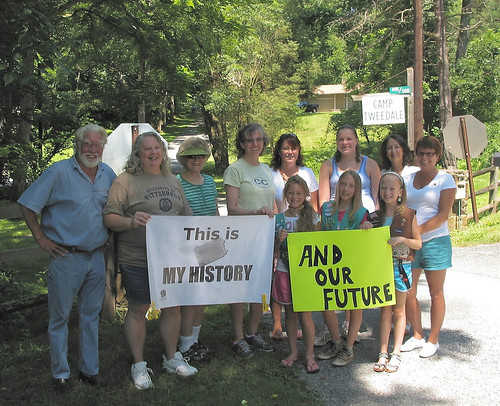
History blankets the state of Pennsylvania, a state with so many stories to share. This summer I discovered the hidden treasure of our state, Old Economy Village of Ambridge, Pennsylvania. It is a historical site and museum so rich with history but so ridden with budget cuts. Old Economy is a fabulous example of how history stays alive even during these times of economic austerity. With our nationwide struggle to balance budgets, many fields across the board have been hit hard, and Public History is no exception. Yet even though these budget cuts have been coming for years now, they have managed to persevere and keep that history alive.
The Harmony Society was a unique part of Pennsylvania’s history and could easily be lost if not for Old Economy Village. They manage an extensive site with a trove of artifacts and only a handful of employees. How do they survive, some might ask? I have seen Old Economy at work, and I can say that they persist because of passion and central goal. The individuals I worked with this summer have an unexplainable love for what they do and where they work, and even though money and resources are tight they succeed by working together. They taught me how a historical site can push through difficult times. I witnessed a selflessness while I was at Old Economy Village that showed me how they reach their goal of bringing the Harmonist past to the present.

My major project this summer was to put together an exhibit for the 150th Anniversary of the Civil War. The theme of the exhibit was a celebration of the efforts of Beaver County, Pennsylvania, and the Harmony Society’s involvement. This project was new and exciting for me. I was given the opportunity to research, write and mount a complete exhibit. The Civil War is a large area of study that many people are interested in and it was no easy task to determine what we should display. We had to figure out what areas we wanted to convey and how best to do it. With so much to do in so little time, we felt like it might never get done. Regardless, we kept on working and when push came to shove, everyone pitched in to help make our exhibit a reality.

Some students may go to an internship and never get dirty, never feel the pressure, never sweat, and never taste the fruits of their labor. This was not the case at Old Economy. Every day brought a new experience and a helpful lesson. My major project may have been creating a Civil War exhibit, but I was able to participate in a little bit of everything. You always had to be prepared to get a little dusty while working on the site. Some afternoons you might have to help in the gardens, other days you might be cleaning collections or working in the archives, and many times you might be lending a hand setting up for a special site event for the community.
The highlight of the internship was watching the PHMC employees, Friends group, and volunteers work together to put on a successful Civil War event. Working that day was a Public Historian’s dream come true. For the first time I was able to see the public enjoying the exhibit that I worked all summer to create. The volunteers, friends and staff helped throw an engaging and educational event for the public. I met so many visitors both young and old that day that had never been to Old Economy but could not wait to come back. [Editor’s note: the Sewickley Herald posted photos of the event here.]

Even in times of economic struggle and stress, history never halts. Historical sites like Old Economy Village keep history alive for the public by working tirelessly to make sure that the past is not lost and the doors are kept open into the future, and they do so by working together, one exhibit at a time.











